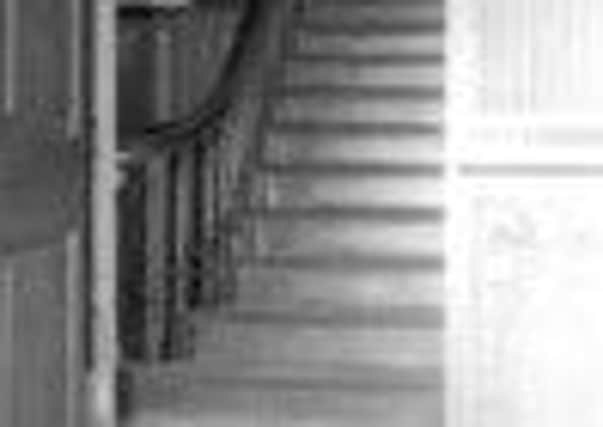Stairway to Brontë history turns up in New York


Lifelong Brontë enthusiast Imelda Marsden, described by her peers as the ‘Miss Marples of Mirfield’, managed to trace the Queen Anne staircase to a house in Long Island on the other side of the Atlantic.
The find has come at an important time as preparations are being made to mark the bicentennial of the birth of Charlotte Brontë in 1816. A number of events are planned both here and in the US to mark the occasion and now the staircase has been found it is hoped it too could form some part thereof.
Advertisement
Hide AdAdvertisement
Hide AdImelda, 68, took up the story: “The staircase was once part of Blake Hall on Church Lane and I can remember going there as a very small child. But the mansion was demolished and today it’s a housing estate. Bits of it were sold to dealers and the staircase went to one in Kensington, London.
“It was sold at auction to a Mr and Mrs Toppings, who had just built themselves a new house on Long Island and were in London looking for things to fill it with. They took the staircase and installed it in their house and there it stayed.”
Indeed, the discovery, which was aided by museum staff in New York, came as a complete surprise to the current owners of the building.
Imelda said: “Anne Brontë was a governess at Blake Hall in 1839, looking after two of the five children of the Ingham family. There was Tom, aged six and Mary-Anne, who was about four or five. The story goes that Tom was a bit of a handful and used to do all sorts of nasty things and Anne Brontë had trouble controlling him. On one occasion, she tied the children to chairs. The family must have found out about this and they dismissed her the same year. She would have worked there for about nine months in all.”
Advertisement
Hide AdAdvertisement
Hide AdFellow Brontë enhusiast Hilary Wainwright writes: “Brontë bicentenaries are going to be celebrated from 2016 to 2020 starting with Charlotte Brontë’s birthday on April 21, 1816 followed by Emily’s on July 30, 1818 and Anne’s on January 17, 1820. The late Sir Linton Andrews, former editor of the Yorkshire Post and chairman of the Brontë Society, laid a wreath at Haworth Parish Church in 1966 to commemorate 150 years since Charlotte’s birth and more events are planned for the bicentenary.
“The staircase represents a slightly more unusual connection between Mirfield and Anne Brontë. Some will know she worked as a governess at Blake Hall for nine months in 1839 and she depicts her experiences there in the first half of Agnes Grey, renaming the hall ‘Wellwood’ and the Ingham family the ‘Bloomfields.’
“That house was demolished in 1954 and, although the interior parts were dismantled and auctioned off, their fates were lost in the mists of time.
“With one exception. Due to a short article in the Mirfield Reporter back in the 1960s, the wonderful Queen Anne staircase, hand-carved in burled yew, went to a London dealer. He then sold it to Allen and Gladys Topping, an American couple he met at Kensington Antiques Fair in 1958 and they installed it in their house on Long Island, New York. The story goes that Mrs Topping saw a ghost on the stairs in 1962. Was it Anne? Who knows?”
Advertisement
Hide AdAdvertisement
Hide AdShe went on: “Having checked this much out, our ‘Miss Marples of Mirfield’ made inquiries abroad but things did not look promising. People seemed to think that the house had been lost in one of the many hurricanes that occur so commonly there.
“The breakthrough came when a keen local librarian suggested contacting the Quogue Long Island Historical Society and they tracked down the exact location of the house and contacted the current owner. Much to their joy they discovered that not only was the staircase intact but the current owner was unaware of its origins and delighted to invite them over to see it.
“Now Mirfield and Quogue are working together to document this little-known link between them with a view to incorporating it in the bicentenary celebrations.” She added: “Sometime in 2016 you will be able to see the fruits of their labours for yourselves. All thanks to crucial evidence in local newspapers and business records unearthed by a killer combination of keen locals and bright librarians on both sides of the pond.”
Anne Brontë lived most of her life with her family at the parish of Haworth on the Yorkshire moors and was the youngest of the Brontë sisters. She wrote two novels, Agnes Grey and The Tenant of Wildfell Hall.